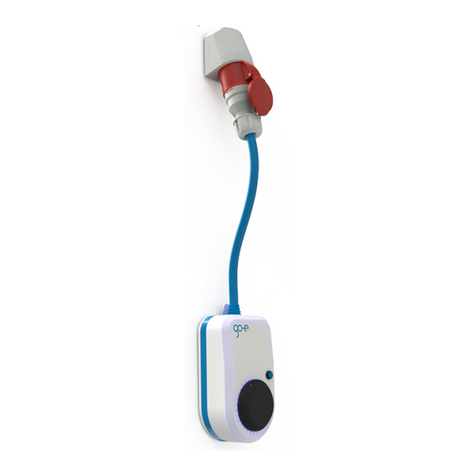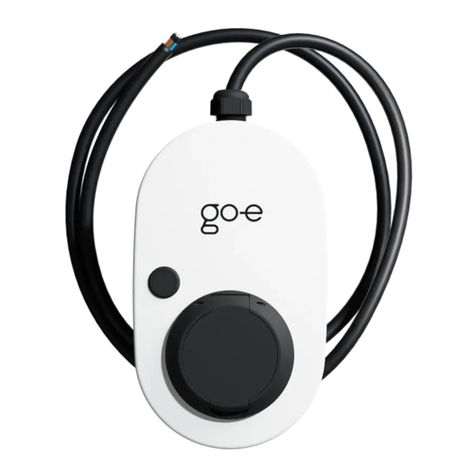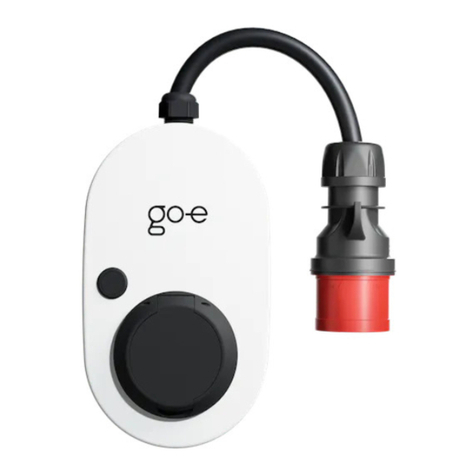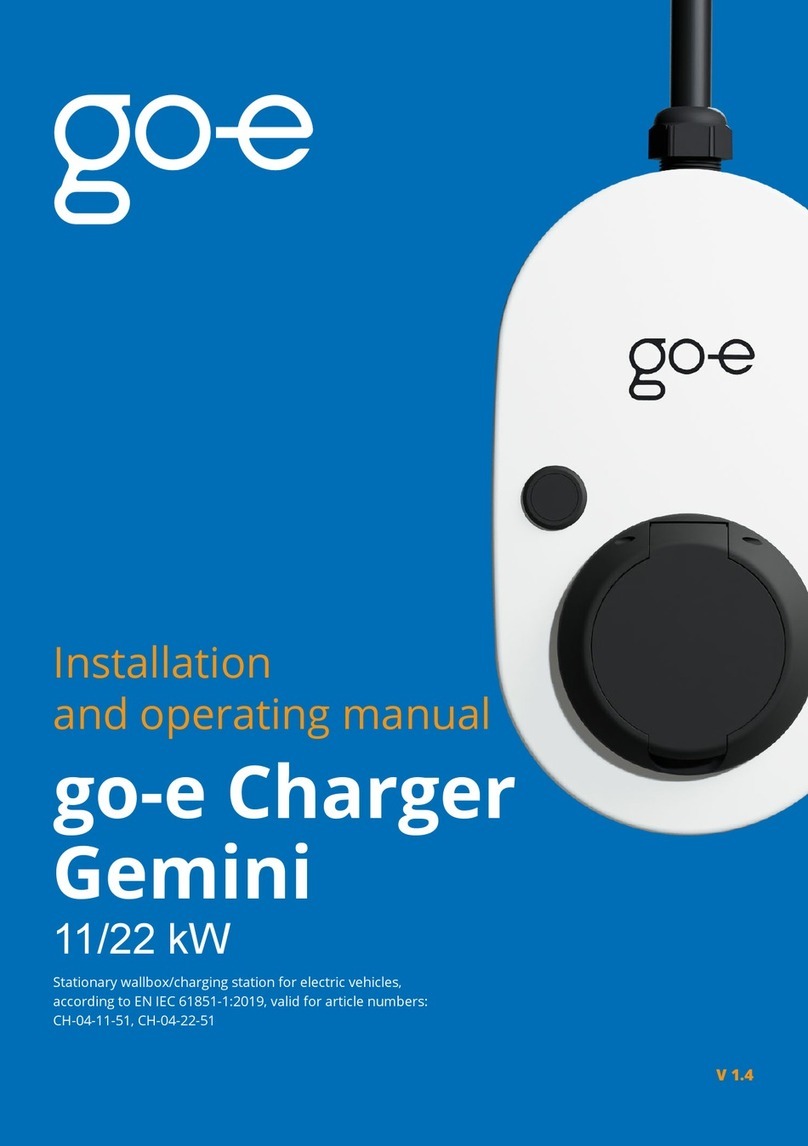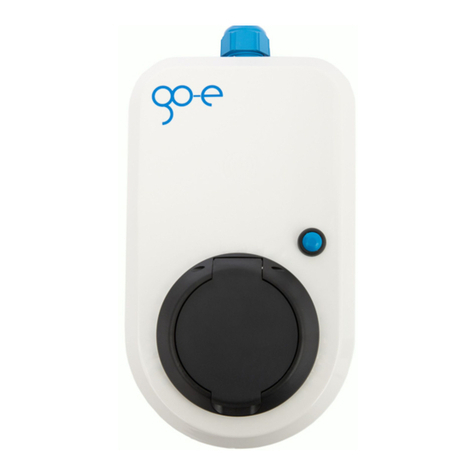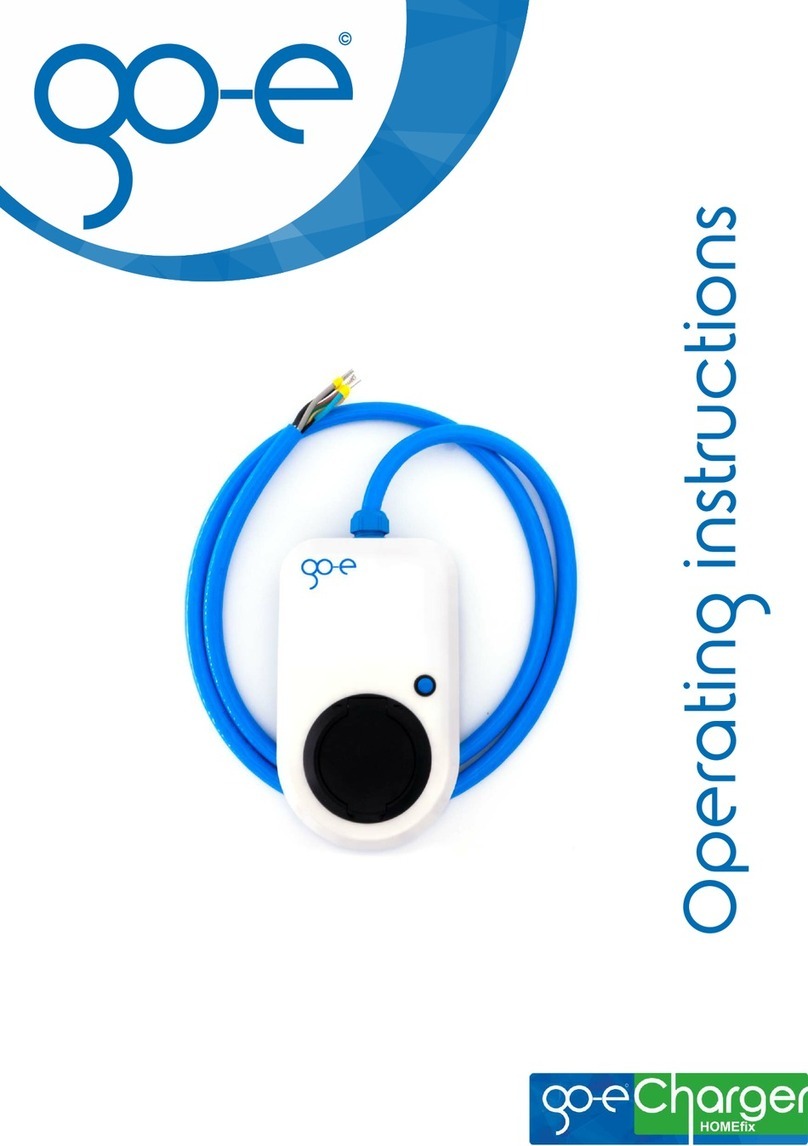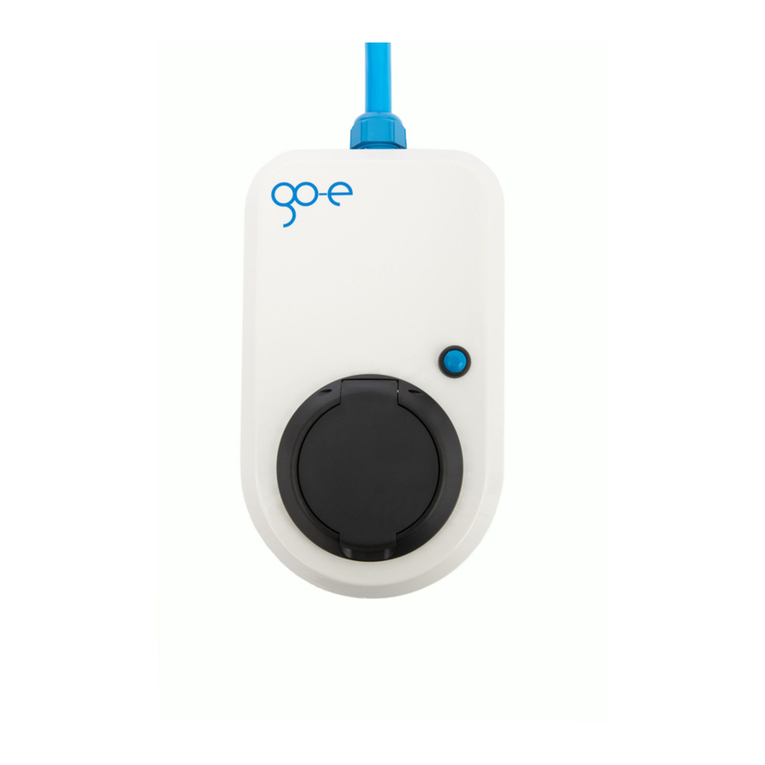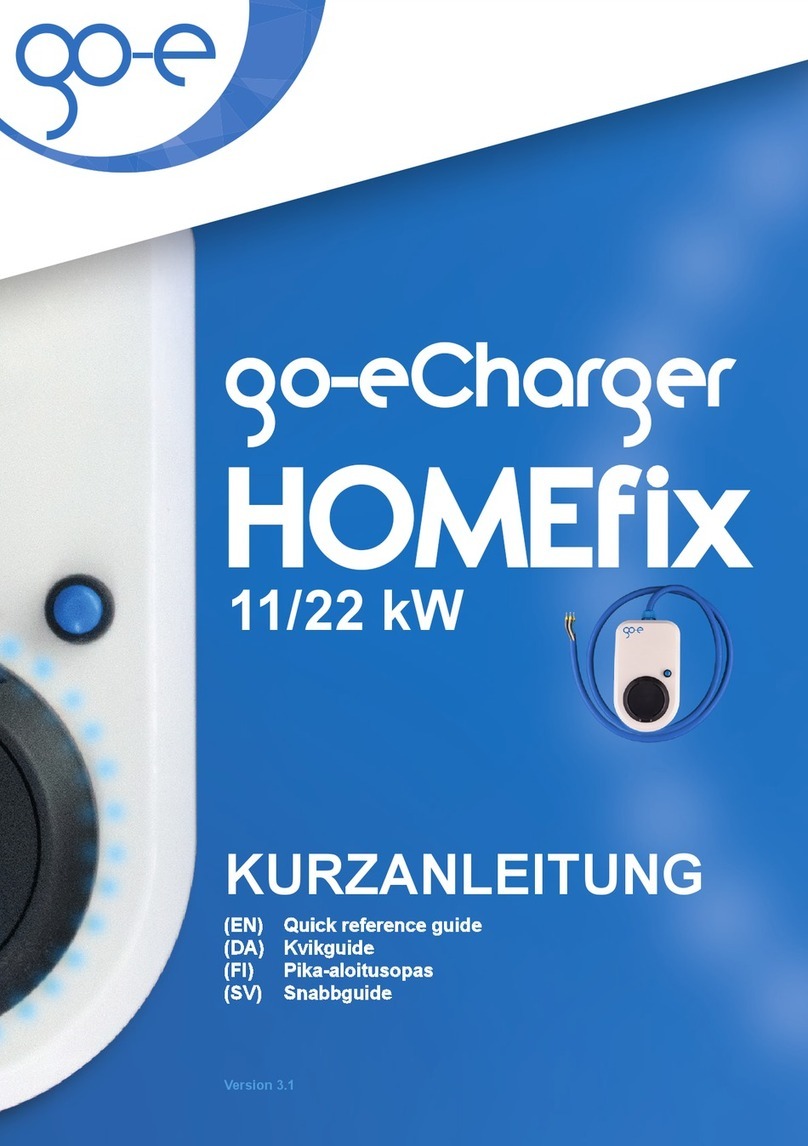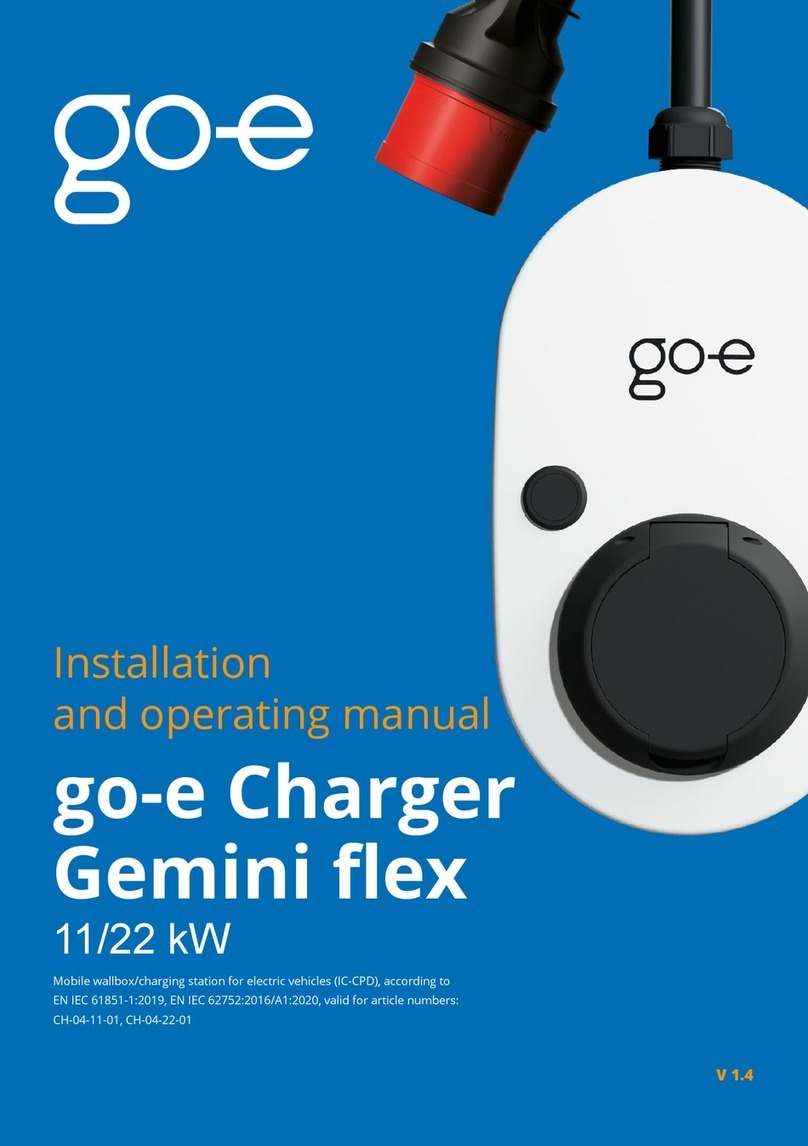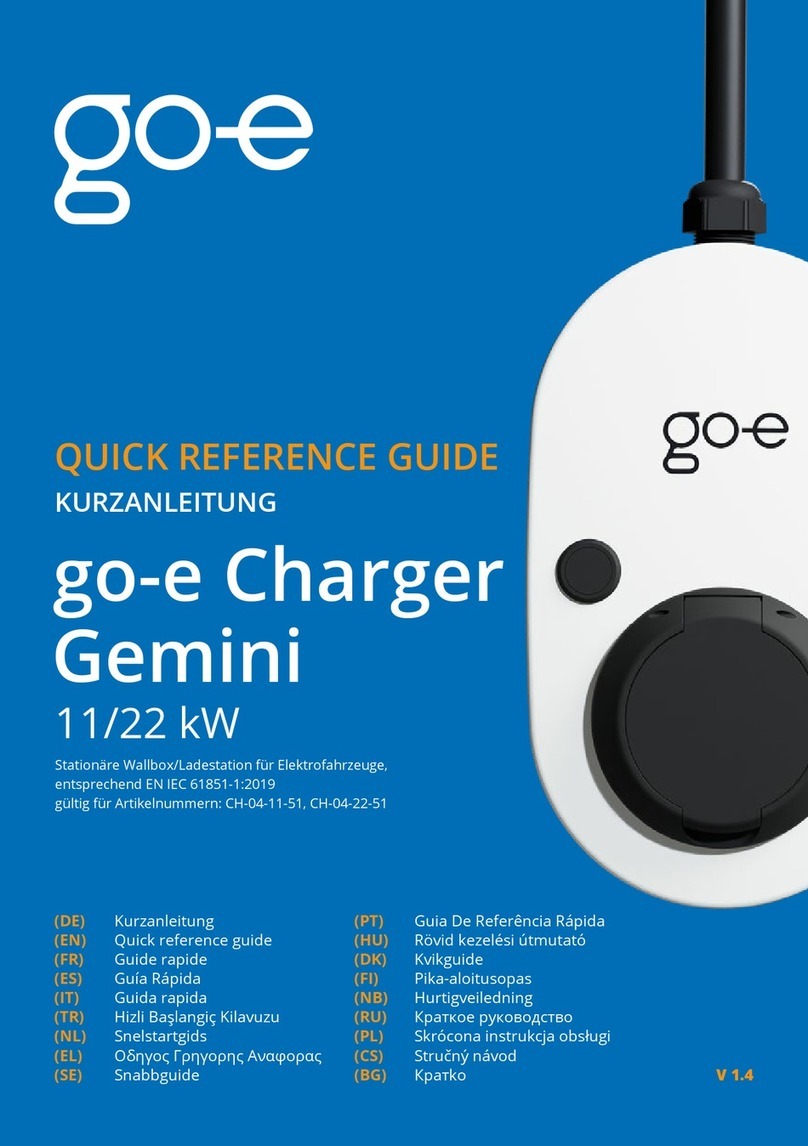
Registration information:
Depending on the country, the requirements of the authorities and electricity
network operators have to be observed, such as a reporting or approval
requirement for charging equipment, or the limitation of 1-phase charging.
Please contact your network operator to find out whether the go-eCharger is
subject to registration or approval and whether other restrictions must be
observed.
Note for Germany: Most of the relevant regulations can be found in the TAR Low
Voltage (VDE-AR-N 4100:2019-04). According to this, every charging station
from 3.6 kW has to be registered at the responsible electricity network operator
according to his specifications before you put it into operation. Up to 12 kW
charging power (like the go-eCharger HOMEfix 11 kW), you only need to inform
the operator where you use the charging box. You can then immediately start
charging your vehicle.
If the charging station has a power output of more than 12 kW (like the go-
eCharger HOMEfix 22 kW), you have to wait for the approval of the German
network operator after registration and before installation. Based on research
by go-e, the approval is almost always granted. Sometimes a reinforcement of
the house connection is necessary for this. Further information on registration
and approval can be found on our website at https://go-e.co/products/go-
echarger-home/?lang=en in the FAQ.
Page 6 Page 7
Please read the instructions for the unit carefully before installa-
tion and initial operation and observe all safety instructions!
This manual should help you:
Ÿto use the product properly
Ÿto avoid damage
Ÿto increase durability and reliability
Ÿto prevent a hazard
go-e GmbH does not assume any liability for damages
caused by disregarding these instructions!
WARNING
ATTENTION
Prelude Safety Instructions
Non-compliance with the operating instructions can have
serious consequences. go-e GmbH does not assume any
liability for damage caused by disregarding operating
instructions or other warnings on the device itself.
Attention! High voltage, fire hazard! Never use the device if the
housing is damaged or opened!
Do not use the go-eCharger if the cables attached or connected
to the device are damaged.
Never use wet or dirty plugs in conjunction with the go-
eCharger.
Make sure that the connection to which the go-eCharger is to be
connected has been properly installed and is undamaged.
The go-eCharger has a built-in RCD protection device with DC
current detection (30 mA AC and 6 mA DC). Therefore an
upstream RCCB type B is not necessary. The circuit to which
the go-eCharger is connected has to be independently of this
fitted with an RCCB type A and (MCB)miniature circuit breaker
Any modification or repair of hardware or software may only be
carried out by qualified personnel of go-e GmbH or personnel
trained for this purpose. The removal of warnings attached to
the go-eCharger or the opening of the device will result in the
loss of any liability by go-e GmbH.
The go-eCharger may only be used for the purpose of charging
EV batteries in conjunction with the appropriate adapters and
cables.
It‘s important to observe the maximum permissible charging
current of the connection at which you are charging. If you don't
known this, charge with the lowest charge current.
Never pull the charging plug by the cable out of the type 2
socket.
Observe the specifications of the electricity network operator
with regard to single-phase charging and the resulting asym-
WARNING
ATTENTION
